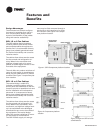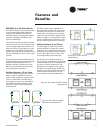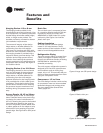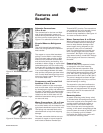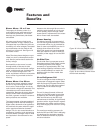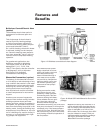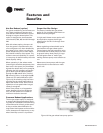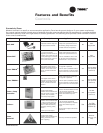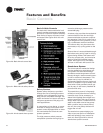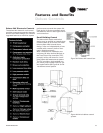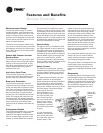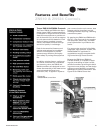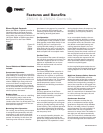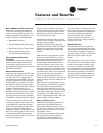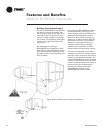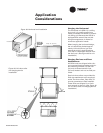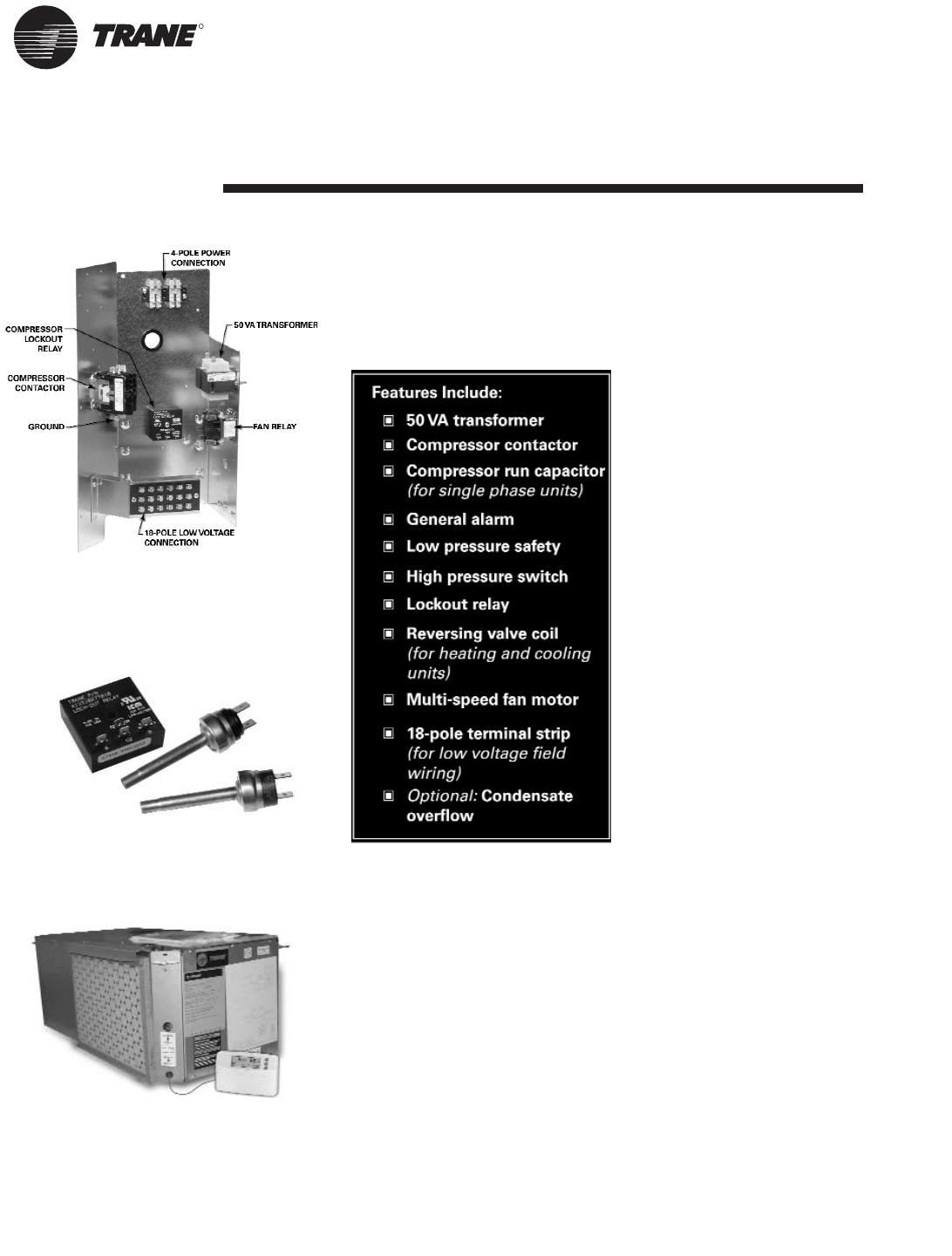
R
Features and Benefits
Basic Controls
WSHP-PRC003-EN
18
Basic 24 Volt Controls
The basic 24 V electromechanical unit
control provides component protection
devices for maximum system reliability.
Each device is factory mounted, wired
and tested.
See Figure 20 for the unit
control box.
Safety Devices
System safety devices are provided
through the use of low/high pressure
switches in the refrigeration circuit to
help prevent compressor damage. The
switch and sensor are set to activate at
refrigerant pressures of 20 psig to fit
most applications.
In cases where a low charge, or exces-
sive loss of charge occurs, each com-
pressor comes equipped with an exter-
nal overload device to halt the com-
pressor operation.
The high pressure switch prevents
compressor operation during high or
excessive discharge pressures that
exceed 395 psig.
A lockout relay provides the mechanical
communication of the low and high
pressure switches to prevent compres-
sor operation if the unit is under low or
high refrigerant circuit pressure, or dur-
ing a condensate overflow condition.
The lockout relay may be reset at the
thermostat, or by cycling power to the
unit.
General alarm is accomplished through
the lockout relay and is used in driving
light emitting diodes. This feature will
drive dry contacts only, and cannot be
used to drive field installed control
inputs.
See Figure 21 for unit safety
devices on the basic 24V control unit.
Stand-alone System
The 24 volt electro-mechanical design
may be applied as a stand-alone con-
trol system. The stand-alone design
provides accurate temperature control
directly through a wall-mounted mercu-
ry bulb or electronic thermostat. This
system set-up may be utilized in a
replacement design where a single unit
retrofit is needed. It may be easily inter-
faced with a field provided control sys-
tem by way of the factory installed 18-
pole terminal strip.
This stand-alone control is frequently
utilized on small jobs where a building
controller may not be necessary, or
where field installed direct digital con-
trols are specified. This type of control
design does require a constant flow of
water to the water source heat pump.
With a positive way to sense flow to
the unit, the units safety devices will
trigger the unit off.
The stand-alone system design pro-
vides a low cost option of installation
while still allowing room control for
each unit.
See Figure 22 for 24 volt
stand-alone system controls.
Figure 20: Basic 24-volt control box.
Figure 21: BAsic 24-volt safety devices.
Figure 22: 24-volt stand-alone system.



